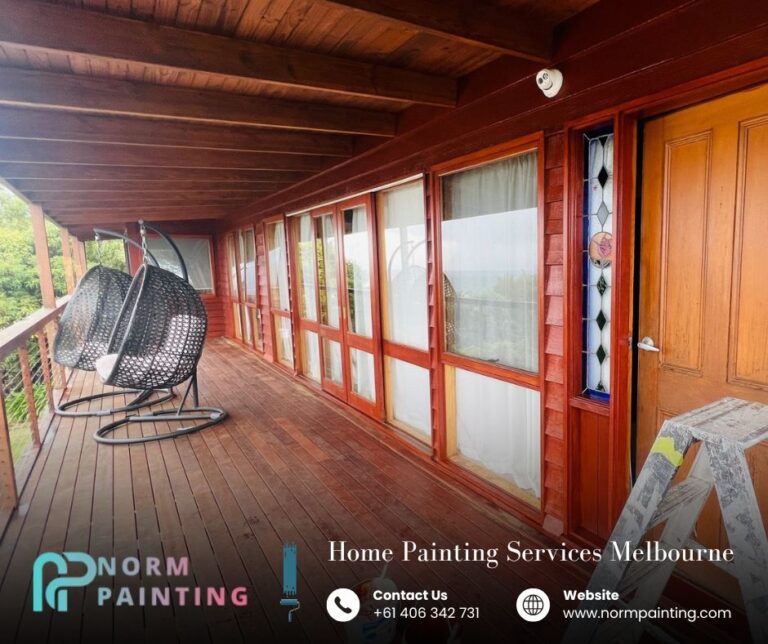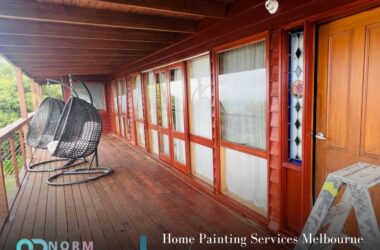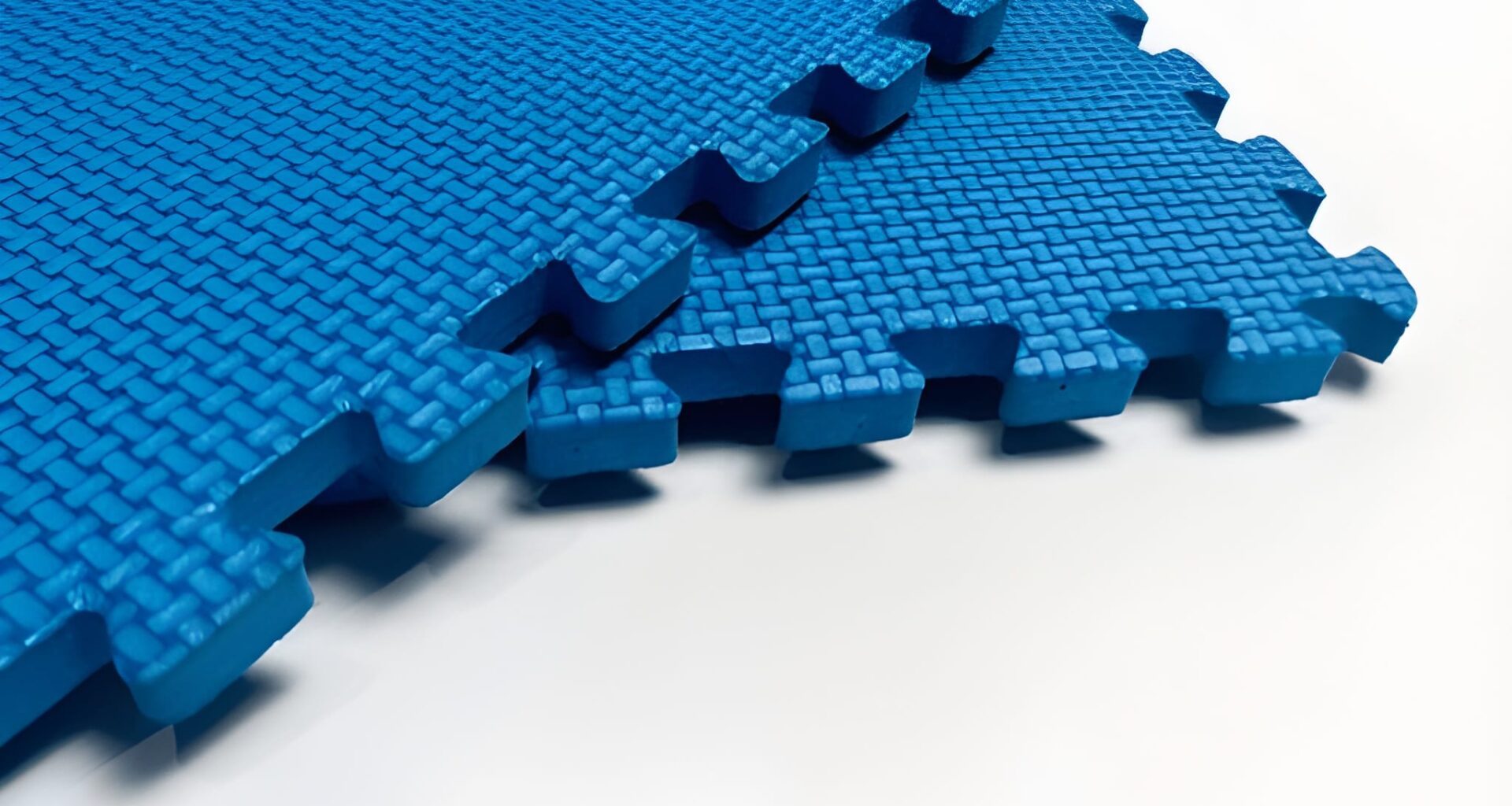Imagine walking into a fitness center where every step feels cushioned yet firm, or a workspace where employees can stand all day without fatigue. All of this comfort is not by chance; it was built from the ground up. The secret lies in something simple yet powerful: Interlocking Floor Mats.
Once limited to gyms and workshops, these mats are now found everywhere — from residential play areas to commercial kitchens and industrial plants. They are designed to enhance safety, comfort, and cleanliness while offering flexibility in design and durability. Whether you’re setting up a small home gym or managing a large production unit, interlocking mats adapt perfectly to your space.
What Are Interlocking Mats and How Do They Work?
Interlocking mats are modular flooring tiles made from rubber, EVA foam, or PVC that fit together like puzzle pieces. Their unique design allows users to customize floor layouts easily without adhesives or complex installations. They’re available in various textures — smooth, ribbed, or studded — each serving specific purposes.
In the past, flooring meant permanent tiles or concrete surfaces that were hard to replace or repair. Interlocking mats changed that game. Today, you can assemble, remove, or rearrange your flooring within minutes —which makes it ideal for dynamic environments like gyms, trade shows, or workshops.
Key Features of Interlocking Floor Mats
- Non-slip surface: Ensures grip and stability, reducing fall risks.
- Shock absorption: Protects equipment and joints during workouts.
- Easy installation: No tools or glue required — just connect and place.
- Custom sizing: Expand or resize depending on your area needs.
- Moisture resistance: Suitable for both indoor and outdoor use.
💡 Did you hear about this? A fitness club in Lahore replaced its old foam flooring with interlocking rubber mats in Pakistan. The result? Equipment lasted longer, noise was reduced by 40%, and clients appreciated the improved comfort during high-intensity workouts.
Where Can You Use Interlocking Mats?
Interlocking mats are incredibly versatile — they fit seamlessly into both residential and commercial spaces.
Let’s explore where they make the biggest impact:
1. Home Gyms & Fitness Zones
For homeowners building small fitness corners or full gyms, rubber interlocking mats are a perfect choice. They protect the floor from heavy weights, reduce noise, and offer grip during high-intensity workouts.
2. Industrial and Commercial Workspaces
In factories, interlocking mats act as anti-fatigue flooring that supports workers who stand for long hours. They minimize strain on knees and backs while providing insulation from cold concrete.
3. Garages & Workshops
Oil spills and metal tools can make garage floors unsafe. Rubber interlocking floor mats provide traction and absorb impact from dropped tools—protecting both the floor and the user.
4. Kids’ Play Areas & Schools
EVA foam interlocking mats are soft, colorful, and shock-absorbent—perfect for play zones where safety matters most.
5. Offices & Retail Environments
Modern offices use interlocking floor mats near entrances or break rooms for slip-resistance, aesthetic appeal, and easier cleaning.
What Are the Benefits of Interlocking Floor Mats?
- Safety Comes First: Non-slip surfaces reduce the risk of injuries caused by falls — especially in high-traffic areas. In industrial setups, rubber mats also resist chemicals, oils, and abrasions.
- Comfort That Lasts: Whether in a gym or a workshop, standing or exercising on hard floors can cause fatigue. Interlocking mats offer ergonomic support that keeps comfort at its peak.
- Easy to Clean and Maintain: These mats can be cleaned using mild soap and water. The interlocking mechanism ensures dirt doesn’t seep underneath, keeping the floor hygienic.
- Cost-Effective and Durable: Unlike tiles that crack or peel, rubber and EVA mats last for years with minimal upkeep. Their modular design means you can replace just one piece instead of redoing the entire floor.
- Sound and Vibration Absorption: Rubber interlocking mats reduce noise in busy areas. For example, rubber flooring in Pakistan is commonly installed in gyms and commercial kitchens to reduce clatter and vibration.
Interlocking Mats vs. Traditional Flooring — Which One Performs Better?
Traditional flooring like ceramic or concrete may look appealing, but it often lacks practicality in dynamic or high-impact environments. Interlocking mats bridge the gap between comfort and performance.
Interlocking Mats vs. Traditional Flooring
| Feature | Interlocking Mats | Traditional Flooring |
| Installation | Quick DIY setup | Needs professional work |
| Durability | Shock and scratch resistant | Can crack or chip easily |
| Maintenance | Minimal, easy to clean | Requires sealing or polishing |
| Safety | Non-slip & ergonomic | Slippery when wet |
| Flexibility | Can expand or move | Permanent |
| Cost | Affordable and replaceable | Expensive repairs |
Did you know?
According to Facility Executive Magazine, workplaces that use anti-fatigue mats report up to 50% fewer employee fatigue complaints compared to those using hard floors.
What to Consider Before Installing Interlocking Mats
Installing interlocking mats is simple, but getting the best results requires some planning.
- Measure Your Space: Take accurate measurements to estimate the number of tiles needed. Always buy 5–10% extra for adjustments or future replacements.
- Surface Preparation: Clean and dry the surface to prevent moisture from trapping underneath.
- Design and Color Coordination: Interlocking mats come in various patterns and colors, allowing you to match your interior or brand theme.
- Choose the Right Material
- EVA Foam: Best for play areas or yoga studios.
- Rubber: Ideal for gyms, factories, and garages.
- PVC: Suitable for high-traffic commercial areas.
“Quality is never an accident; it is always the result of intelligent effort.” — John Ruskin
How to Install Interlocking Floor Mats Step-by-Step
One reason interlocking mats are so popular is how simple they are to install. Here’s how to get it right:
- Prepare the Surface: Clean and dry the area. Make sure it’s flat and free of debris.
- Plan the Layout: Decide where to start (usually from one corner).
- Connect the Tiles: Snap each mat together using the interlocking edges.
- Trim for Fit: Cut the edges neatly to fit walls or corners using a utility knife.
- Finish with Edging Strips: Optional trims give the floor a clean, professional look.
Interlocking Mat Success Stories
Success Stories #1: Industrial Use
A manufacturing unit in Faisalabad installed interlocking rubber mats in Pakistan across its assembly line. Worker fatigue dropped by 35%, and productivity rose within three months.
Success Stories #2: Gym and Sports Complex
A gym in Islamabad replaced its old carpet flooring with rubber flooring in Pakistan, achieving better traction, reduced noise, and zero floor damage despite heavy equipment use.
Success Stories #3: Educational Spaces
Schools across Punjab have started using EVA interlocking mats for their play zones to enhance child safety and easy maintenance.
Environmental Benefits of Interlocking Rubber Mats
Rubber interlocking mats are not only practical but also eco-conscious. Many are made from recycled rubber — such as tires — reducing landfill waste and promoting sustainability.
“The greatest threat to our planet is the belief that someone else will save it.” — Robert Swan
Additionally, these mats’ long life cycle means fewer replacements, less manufacturing waste, and better energy efficiency.
Why Choose Polycrafts Pvt. Ltd for Rubber Flooring in Pakistan?
When it comes to quality and innovation, Polycrafts Pvt. Ltd is the largest manufacturer of rubber flooring solutions in Pakistan.
With decades of experience, they specialize in durable, slip-resistant, and customizable rubber mats that cater to various industries — from gyms and offices to industrial plants.
Their flooring solutions meet international safety and durability standards, offering clients confidence and long-term reliability. Every product reflects Polycrafts’ commitment to excellence, ensuring that customers across Pakistan benefit from flooring that’s both functional and stylish.
Final Thoughts — Building Safety and Comfort, One Floor at a Time
Flooring may not be the first thing you notice in a space, but it’s the foundation that defines comfort, safety, and productivity. Interlocking mats combine strength, adaptability, and elegance — making them one of the smartest flooring choices for homes, gyms, and industrial zones alike.
“Perfection is achieved not when there is nothing more to add, but when there is nothing left to take away.” — Antoine de Saint-Exupéry
Whether you’re upgrading a small space or planning a large facility, choosing high-quality interlocking mats ensures durability, hygiene, and peace of mind. After all, a strong foundation leads to stronger results.
FAQs
Are interlocking mats easy to install?
Yes, they require no adhesives or tools — just align and press together.
Can interlocking mats be used outdoors?
Yes, rubber interlocking mats are weather-resistant and suitable for outdoor use.
Do interlocking mats reduce noise?
Absolutely. Their cushioned structure absorbs vibration and sound effectively.
Are they safe for children and pets?
Yes, EVA foam mats are non-toxic and soft, making them perfect for play areas.
How do I clean interlocking mats?
Simply wipe or mop them with mild detergent and water.
Be sure to check back for more exciting news on talentsofworld!









